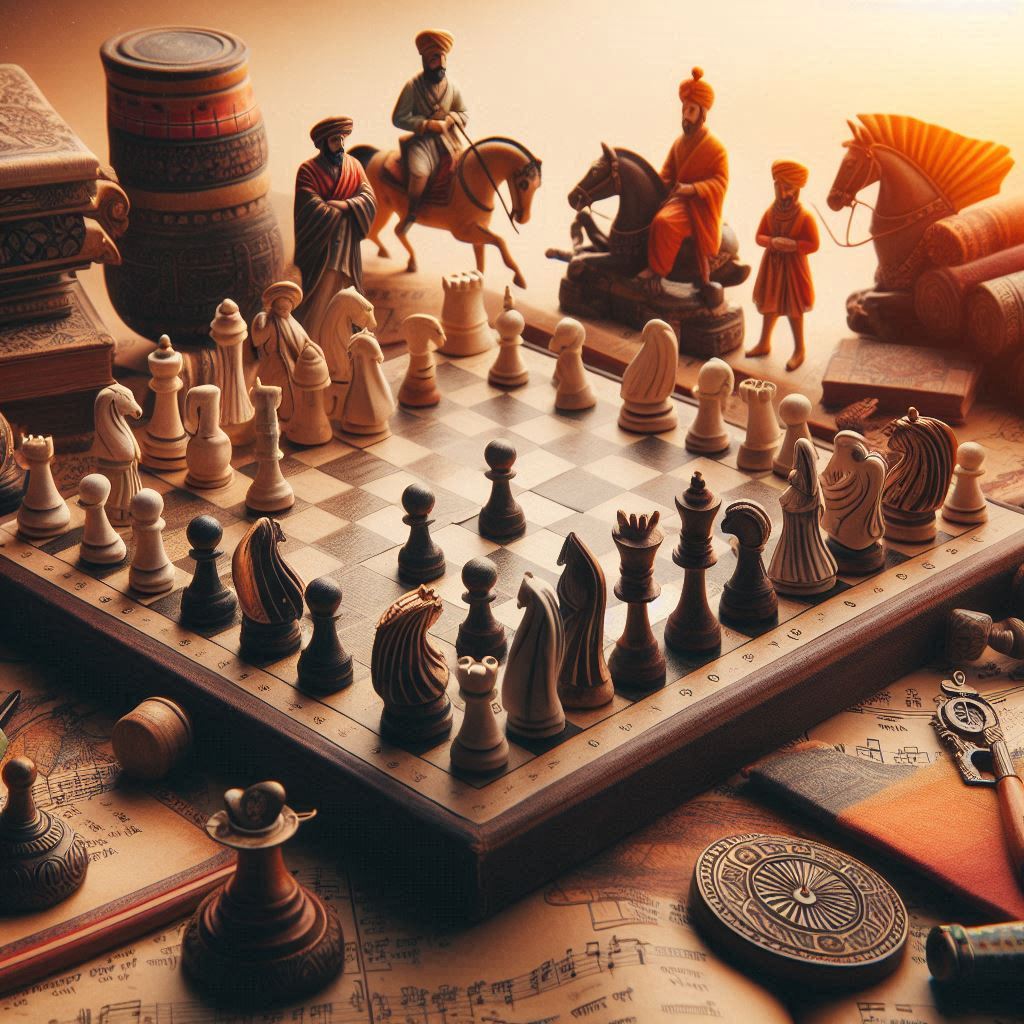Introduction
Chess is a game of strategy, skill, and foresight. While it can seem daunting to new players, understanding a few key principles and strategies can significantly improve your game. This guide covers essential chess strategies for beginners, including basic principles, opening moves, and tactical ideas to help you outsmart your opponents.
Thank you for reading this post, don't forget to subscribe!Basic Principles of Chess
Control the Center
Why it Matters
Controlling the center of the board (the squares d4, d5, e4, and e5) is crucial because it allows your pieces to move more freely and exert influence over key areas of the board.
How to Control the Center
- Pawns: Use your pawns to control central squares early in the game (e.g., 1. e4 or 1. d4).
- Pieces: Develop your knights and bishops toward the center to increase their activity and control.
Develop Your Pieces
Early Development
Develop your pieces (knights and bishops) early in the game to positions where they can be active and control important squares.
Key Tips:
- Develop knights before bishops: Knights are usually more effective in the center.
- Avoid moving the same piece multiple times in the opening unless necessary.
Protect Your King
Castling
Castling is a crucial move for safeguarding your king and connecting your rooks. Aim to castle early, either kingside (short castle) or queenside (long castle), depending on the position.
Kingside Castling: Moves: O-O Queenside Castling: Moves: O-O-O
Maintain a Solid Pawn Structure
Why Pawn Structure Matters
A solid pawn structure provides a strong foundation for your pieces, controls key squares, and creates potential weaknesses in your opponent’s position.
Avoid Weaknesses:
- Avoid creating isolated pawns (pawns with no friendly pawns on adjacent files).
- Avoid doubled pawns (two pawns of the same color on the same file) as they can be weak and difficult to defend.
Think Ahead
Planning Moves
Always think a few moves ahead, considering your opponent’s possible responses and planning your strategy accordingly.
Basic Tactics:
- Forks: Use one piece to attack two of your opponent’s pieces simultaneously.
- Pins: Immobilize a piece by placing it in a position where moving it would expose a more valuable piece behind it.
- Skewers: Attack a valuable piece, forcing it to move and revealing a less valuable piece behind it.
Opening Strategies for Beginners
The Italian Game
Moves:
- e4 e5
- Nf3 Nc6
- Bc4
Why It’s Effective
The Italian Game is a popular opening for beginners because it focuses on controlling the center and developing pieces quickly. It also sets up potential attacks on the f7 square, a weak point in Black’s position.
The Sicilian Defense
Moves:
- e4 c5
Why It’s Effective
The Sicilian Defense is a strong response to 1. e4, aiming to create imbalances and opportunities for counterplay. It can lead to complex and dynamic positions, giving Black chances to fight for the initiative.
The Ruy Lopez
Moves:
- e4 e5
- Nf3 Nc6
- Bb5
Why It’s Effective
The Ruy Lopez is a classical opening that puts pressure on Black’s knight on c6 and indirectly targets the e5 pawn. It leads to rich strategic play and helps beginners learn important opening principles.
The Queen’s Gambit
Moves:
- d4 d5
- c4
Why It’s Effective
The Queen’s Gambit is a strong opening for White, aiming to control the center and open lines for piece development. It offers deep strategic play and teaches beginners about pawn structure and positional play.
Tactical Ideas for Beginners
Forks
What is a Fork?
A fork is a tactic where a single piece attacks two or more of the opponent’s pieces simultaneously, creating multiple threats.
Example:
A knight on e5 can fork a king on g8 and a rook on f7, attacking both pieces at the same time.
Pins
What is a Pin?
A pin is a tactic where a piece is immobilized because moving it would expose a more valuable piece behind it.
Example:
A bishop on b5 pins a knight on c6 to a king on e8, preventing the knight from moving.
Skewers
What is a Skewer?
A skewer is a tactic where a more valuable piece is attacked first, forcing it to move and revealing a less valuable piece behind it.
Example:
A rook on d1 skewers a queen on d8 to a king on e8, forcing the queen to move and allowing the rook to capture the king.
Discovered Attacks
What is a Discovered Attack?
A discovered attack occurs when moving one piece reveals an attack by another piece.
Example:
Moving a knight from d4 to f5 reveals an attack by a bishop on c4 to a queen on g8.
Practical Tips for Beginners
Practice Regularly
Consistent Practice
Playing regularly helps you understand different positions, tactics, and strategies. Use online platforms or play with friends to get more experience.
Analyze Your Games
Learn from Mistakes
Review your games to identify mistakes and missed opportunities. Learning from your errors helps you improve faster.
Solve Puzzles
Tactical Puzzles
Solving chess puzzles helps you recognize tactical patterns and improve your calculation skills.
Study Grandmaster Games
Learn from the Best
Studying games played by grandmasters helps you understand advanced strategies and techniques. Pay attention to their opening choices, middlegame plans, and endgame techniques.
FAQs
What are the most important principles for beginner chess players?
The most important principles include controlling the center, developing your pieces, protecting your king, maintaining a solid pawn structure, and thinking ahead.
How can I improve my chess tactics?
Improve your tactics by practicing regularly, solving puzzles, and studying tactical patterns like forks, pins, skewers, and discovered attacks.
Why is it important to castle early in the game?
Castling early helps protect your king and connects your rooks, allowing them to support each other and control open files.
What are some good openings for beginners?
Good openings for beginners include the Italian Game, the Sicilian Defense, the Ruy Lopez, and the Queen’s Gambit. These openings focus on controlling the center and developing pieces quickly.
How can I analyze my chess games?
Analyze your games by reviewing your moves and identifying mistakes or missed opportunities. Use chess software or work with a coach to get deeper insights.
Why is studying grandmaster games beneficial?
Studying grandmaster games helps you understand advanced strategies and techniques. It provides insights into effective opening choices, middlegame plans, and endgame techniques.
Conclusion
Mastering the basics of chess strategies is essential for beginners looking to improve their game. By understanding fundamental principles, practicing essential openings, and honing your tactical skills, you can develop a strong foundation and start winning more games. Remember to practice regularly, analyze your games, and learn from the best to continue growing as a chess player.



